Walter Hackett
 Walter Hackett spent his major-league career with two Boston teams in 1884-1885, the first with the short-lived Union Association, and the second with the National League. He was a solid defensive shortstop in his day, but it didn’t lead him to a lengthy career. We don’t know which side Walter batted or threw from, or what his size was. What we do know is that Walter and his brother Mert were one of baseball’s forgotten brother tandems. They were teammates in Boston (NL) in 1885.
Walter Hackett spent his major-league career with two Boston teams in 1884-1885, the first with the short-lived Union Association, and the second with the National League. He was a solid defensive shortstop in his day, but it didn’t lead him to a lengthy career. We don’t know which side Walter batted or threw from, or what his size was. What we do know is that Walter and his brother Mert were one of baseball’s forgotten brother tandems. They were teammates in Boston (NL) in 1885.
Walter Henry Hackett was born on August 15, 1857, in Cambridge, Massachusetts, across the Charles River from Boston. His parents were Irish immigrants Walter H. and Mary (Norris) Hackett. His father was a gardener/laborer who operated Hackett’s Yard, according to the Cambridge directory. Walter Sr. employed several, including a gardener who tended to his horses and carriages.1 The Hacketts were a large family. Young Walter’s nine siblings were Mary M., Bridget, John, Catherine, Anne, Maggie, Jane, Thomas, and Mortimer “Mert,” who would join Walter in the major leagues. Their extended family included cousins who were also future major leaguers: Dad Clarkson, John Clarkson, and Walter Clarkson. Walter claimed, years later, that he taught John Clarkson how to throw a curveball.2
In 1879 Walter was the captain of the Riversides of Cambridge, which contained three future major leaguers. “[Mert] Hackett is A No. 1, and he stands up to the bat like a man,” praised the local Cambridge Chronicle. “His delivery is perfect, his catching almost faultless, and his record in base ball circles has been good. His brother [Walter], on second base, is well deserving. [John] Clarkson is not to be beat, his delivery being even and swift.”3
Also in 1879, Walter married Elizabeth McCoy, the daughter of Cambridge residents William and Catherine (Brown) McCoy. In 1880 Walter and Elizabeth lived at 1 Athens Street in Cambridge and Walter worked as a printer for University Press in the city’s Brattle Square. In 1883 Walter played first base for the Newtons and shortstop for the Lynn club.4
The major leagues fractured in three ways in 1884, as the Union Association competed with the National League and American Association, providing plenty of job opportunities. Tim Murnane, a former Boston NL player and now manager of the Boston Unions, signed Walter to a contract as his starting shortstop.5 “He is very quick,” wrote the Boston Globe of Walter, “covers a good deal of ground and is an excellent general player.”6 Hackett made his major-league debut when the Boston Unions opened the season in Philadelphia before a sparse crowd of 500. He sputtered, going 0-for-5.7 “The Bostons have a fine man in Hackett, their short stop,” wrote the Cincinnati Enquirer after a May 15 contest. Hackett made seven assists and drove in two runs in a 3-2 win.8
By the end of the season, Hackett’s fielding percentage (.855) and games played (103) were first among all Union Association shortstops and, looking at the modern statistic of range factor, he was second in the UA, which proved young Walter could cover a lot of ground. But his 71 errors ranked third among UA shortstops. Boston finished a middling 58-51-2 and the UA dissolved after one season.
Hackett signed with Kansas City of the Western League in 1885 and played 30 games, batting a lowly .213. But he again impressed with the glove. In a May 3 pounding of Cleveland, Hackett won “golden opinions for covering ground, police stops and backing up of bases,” wrote the Kansas City Times.9 Hackett did have a three-hit game in Kansas City’s 23-1 shellacking of Omaha on June 3 along with a “neat one-hand stop” on a hard grounder, wrote the Kansas City Journal.10
Hackett was released and the Kansas City club disbanded soon after. He returned home to be reunited with his brother Mert on the Boston National League squad The team had lost Jack Burdock to a shoulder injury and needed an extra pair of hands in the infield.11 Walter played 35 games in the middle infield. “Walter Hackett covered himself with glory by his brilliant playing at second base,” noted the Globe, writing about an August game.12 This brief time together places the Hackett brothers in the ranks of other major-league brothers who played together in the same lineup.13 Burdock returned in late August and Walter, no longer needed, was released in early September.14
Hackett joined the Rochester (New York) Maroons of the International League in 1886. “Every lover of the national game in this vicinity knows Walter Hackett,” wrote the Rochester Democrat and Chronicle. “Walter isn’t very large physically, but he can play ball. Walter has an excellent reputation as all around man and comes handy wherever he is placed.”15 He batted .228 in 79 games. In 1887 Hackett joined Hartford of the Eastern League and had his best season at the plate (.319 batting average). In 1888 he reunited with Mert on the Troy (New York) Trojans of the International Association and played 73 games.16 One newspaper account listed Walter’s fielding percentage (.887) as second in the International Association at shortstop while he batted .218. “He is regarded as a cool-headed, reliable man,” wrote the Evening Herald of Fall River, Massachusetts, “thoroughly informed in the fine points of the game.”17
The brothers left Troy after being asked to take salary cuts. Walter joined Lowell (Massachusetts) of the Atlantic Association in 1889 and despite “astonishing the natives in Lowell with his short stopping and hitting,” he was released in June.18 Hackett didn’t have much good to say about his time in Lowell. “Walter Hackett says that in all his base ball experience he never played in a city like Lowell,” the Boston Herald reported. “He says there is little wonder that players cannot do good work in that city on account of the way occupants of the bleaching boards talk to the men. They launch the most unseemly epithets at a home player if he makes an error, or if he does not succeed in batting safely, and a home player is actually rattled by the home crowd. The crowd works against itself in that city.”19 The Lowell Sun fired back. “The base ball patrons treated Hackett with more consideration than he deserved,” the paper wrote. “If he had been retained on our team two weeks longer, he would have knocked the bottom out of the club. He’s a poor ball player and all the newspaper talk that he can make in ten years won’t improve him.”20
In a baseball battle between Lexington and Concord, both Mert and Walter suited up for Lexington in a losing cause.21 Walter also took some umpiring gigs from time to time, such as a Harvard-Yale game. “He did fairly well,” noted the Boston Herald, “if anything favoring Harvard.”22
Seeking major-league jobs, Mert and Walter worked out over the winter at the Father Scurry Gymnasium in Cambridge. Their former manager, John Morrill, retired in 1890 and opened the John F. Morrill & Co. sporting goods shop on Bromfield Street in Boston. He organized a baseball team of the same name and brought the Hackett brothers on board.23 In 1891 both Hackett brothers played for a club in Hyannis, Massachusetts (on Cape Cod), known as the “Bold Hypnotizers.”24
Walter worked for 20 years as a proofreader for the Boston Globe and organized and managed the Globe’s baseball team for years. The 1904 Globe team went 9-1 in a league made up of Boston newspaper teams: the Post, American, Herald, Journal, and the Evening Transcript. They won the Newspaper League Trophy. “Much of the team’s success,” the Globe boasted, “has been due to the coaching of manager Walter Hackett.”25 Walter also belonged to the Typographical Union and the Printers’ Mutual Relief Association.26
Walter’s wife, Elizabeth, died in 1896 of pulmonary consumption, leaving him to raise his three sons, Walter, Jr., William, and Mortimer. By 1900, Mert had moved in with them at 9 Mt. Auburn Street in Cambridge, joining Elizabeth’s two sisters, Mary and Katie McCoy. In 1911 Walter married Mary T. Ward, daughter of Noah and Jane (Smith) Ward from New Hampton, New Hampshire. They purchased their own home in Cambridge. Walter still worked for the Globe in 1920.
Walter was one of an estimated 62,000 people who flocked to revival services in Boston in January of 1917 to hear the evangelist and onetime ballplayer Billy Sunday. Sunday and Hackett were old friends. The two shook hands, recalling their ballplaying days from 1885. “I’ve had to fight for Bill sometimes since he came to Boston,” Hackett said. “Every big man like that is knocked now and then, but I knew what kind of fellow he was as a ballplayer. We called him the good boy of the team.”27
Walter Hackett died in Cambridge on October 2, 1920, at the age of 63, of a paralytic shock. Mary survived him, as did his three sons and four grandchildren. Several of his co-workers at the Boston Globe served as pallbearers. He is buried at St. Paul Cemetery in Arlington, Massachusetts. Like much of his baseball career, his final resting place is just a few steps away from his brother Mert.
Acknowledgments
This biography was reviewed by Darren Gibson and Len Levin and checked for accuracy by members of SABR’s fact-checking team.
Photo credit: Walter Hackett, Baseball-Reference.com.
Sources
In addition to items in the Notes, the author consulted:
Baseball-Reference.com
Familysearch.org
Findagrave.com
Nemec, David. The Great Encyclopedia of 19th Century Major League Baseball. (New York: Donald I. Fine, 1997).
Retrosheet.org
The Cambridge Directory for 1880
Van Damme, Marieke, from the Cambridge Historical Society Notes
Notes
1 The Cambridge Directory for the Year 1873, 155; Boston Daily Transcript, April 28, 1862: 4.
2 “Meets Old-Time Friend,” Boston Globe, January 22, 1917: 4.
3 “Base Ball,” Cambridge Chronicle, June 7, 1879: 4; July 12, 1879: 4.
4 “Base Ball Notes,” Boston Globe, April 3, 1884: 4.
5 “Base Ball Notes,” April 3, 1884: 4.
6 “Boston’s Union Nine Selected,” Boston Globe, April 6, 1884: 5.
7 “Base Ball,” Philadelphia Inquirer, April 18, 1884: 2.
8 “A Frigid Day,” Cincinnati Enquirer, May 16, 1884: 2.
9 “Victors with Ease,” Kansas City Times, May 4, 1885: 2.
10 “Omaha’s Awful Fate,” Kansas City Journal, June 4, 1885: 1.
11 “Twice in One Day,” Boston Globe, June 18, 1885: 4.
12 “Welch Did It,” Boston Globe, August 13, 1885: 2.
13 However, this brother combo was not recognized in a 2024 article “Brothers as Teammates in MLB History” on MLB.com. “Brothers as teammates in MLB history,” MLB.com, April 10, 2024. Retrieved July 9, 2024. mlb.com/news/brothers-as-teammates-in-mlb-history. George and Harry Wright are another notable nineteenth-century omission.
14 “Base Ball,” Boston Transcript, September 2, 1885: 2.
15 “The Players in Print,” Rochester Democrat and Chronicle, May 7, 1886: 7.
16 “Diamond Drift,” Boston Herald, June 18, 1888: 8; “Earned and Stolen Bases,” Lynn (Massachusetts) Daily Item, March 30, 1889: 3; The Lowell Club Complete,” Fall River (Massachusetts) Daily Herald, March 30, 1889: 2.
17 “The Lowell Club Complete,” Fall River Evening Herald, March 30, 1889: 2.
18 “Touched Out,” Boston Herald, August 21, 1888: 5; “Earned and Stolen Bases,” Lynn Daily Item, June 7, 1889: 4; “Base Ball Notes,” Boston Globe, May 27, 1889: 5.
19 “From the Outfield,” Boston Herald, June 27, 1889: 5.
20 “Base Ball News,” Lowell Sun, June 29, 1889: 1.
21 “Concords 2; Lexingtons 1,” Boston Globe, August 11, 1889: 4.
22 “Superb Conditions,” Boston Herald, June 23, 1889: 4.
23 “Approach of the Season,” Boston Globe, March 30, 1890: 3; “Morrill’s Team,” Boston Globe, March 17, 1890: 4.
24 “Bold Hypnotizers,” Boston Globe, July 10, 1891: 3.
25 “Globe Team Wins the Newspaper League Baseball Trophy,” Boston Globe, September 8, 1904: 2.
26 “Walter H. Hackett Dies in Cambridge,” Boston Globe, October 5, 1920: 13.
27 “Meets Old-Time Friend,” Boston Globe, January 22, 1917: 4.
Full Name
Walter Henry Hackett
Born
August 15, 1857 at Cambridge, MA (USA)
Died
October 2, 1920 at Cambridge, MA (USA)
If you can help us improve this player’s biography, contact us.


